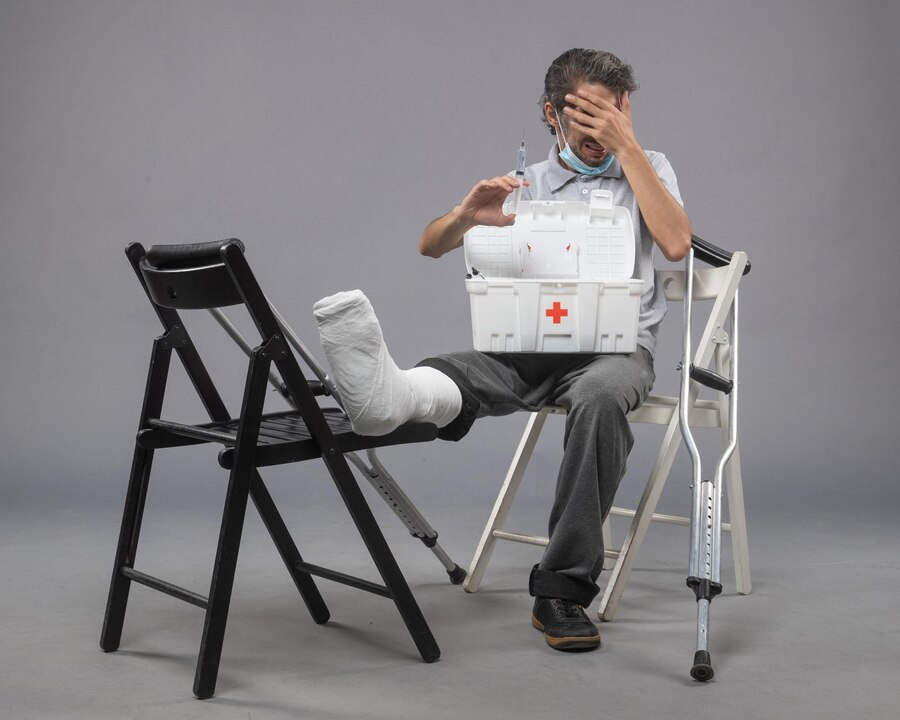
Accidents happen. Sometimes, they result from carelessness, and other times, they stem from professional mistakes. But when it comes to legal claims, not all injuries are treated the same way. Personal injury and medical negligence cases may seem similar, but they follow different rules and legal processes.
Understanding the distinction is crucial if you’re considering legal action. While both cases involve harm caused by another party, medical negligence claims specifically deal with mistakes made by healthcare professionals. Personal injury, on the other hand, covers a broader range of accidents, from car crashes to workplace injuries. If you’re unsure whether your case falls under medical malpractice or personal injury law, seeking guidance from medical negligence lawyers Sydney can help clarify your options.
To break things down, let’s look at the key differences between personal injury and medical negligence claims, how each case is handled, and what you need to prove in court.

What Is Personal Injury?
Personal injury law covers situations where a person is harmed due to someone else’s negligence or reckless behavior. These cases can involve anything from slip-and-fall accidents to car crashes, defective products, and workplace injuries.
The core idea behind personal injury claims is that one party had a duty of care and failed to uphold it, leading to someone else’s harm. The injured party (plaintiff) must prove that the defendant was negligent and that their negligence directly caused the injury.
Examples of Personal Injury Cases
- Car accidents – If a driver runs a red light and crashes into another vehicle, the injured party can file a personal injury claim.
- Workplace accidents – If an employer fails to provide a safe work environment and a worker gets hurt, they may be eligible for compensation.
- Slip and fall incidents – If a business owner neglects to clean up a spill and a customer slips and gets injured, the injured person may have grounds for a claim.
- Defective products – If a manufacturer produces a faulty product that causes harm, the injured consumer can take legal action.
In these cases, the goal is to secure compensation for damages, including medical bills, lost wages, and pain and suffering.
What Is Medical Negligence?
Medical negligence, often called medical malpractice, is a specific type of personal injury that focuses on errors made by healthcare professionals. Unlike general personal injury claims, medical negligence cases require proof that a doctor, nurse, or other healthcare provider failed to meet the standard of care expected in their profession.
This means that even if a medical procedure leads to an undesirable outcome, it does not automatically qualify as negligence. There must be evidence that the medical provider made an avoidable mistake that a competent professional in the same field would not have made.
Examples of Medical Negligence Cases
- Misdiagnosis or delayed diagnosis – If a doctor fails to diagnose a serious condition, leading to worsened health, they may be liable.
- Surgical errors – Operating on the wrong body part or leaving surgical instruments inside a patient can be considered malpractice.
- Medication mistakes – Prescribing the wrong medication or incorrect dosage can have serious consequences.
- Birth injuries – Medical mistakes during childbirth can result in long-term harm to both the baby and the mother.
- Failure to obtain informed consent – If a doctor performs a procedure without properly informing the patient of the risks, it may be grounds for a claim.
The legal process for medical negligence cases is often more complex and evidence-heavy than standard personal injury claims.
Key Differences Between Personal Injury and Medical Negligence
While both types of claims involve seeking compensation for harm caused by another party, they differ in several important ways.
1. Who Can Be Held Responsible?
- Personal injury claims can be made against individuals, businesses, or even government entities.
- Medical negligence claims specifically involve healthcare professionals or institutions, such as doctors, nurses, hospitals, or clinics.
2. The Standard of Proof
- In personal injury cases, the plaintiff must show that the defendant acted negligently.
- In medical negligence cases, the plaintiff must prove that the healthcare provider failed to meet the medical standard of care—a much higher legal standard.
3. Complexity of Evidence
- Personal injury claims usually rely on witness statements, accident reports, and surveillance footage.
- Medical negligence claims require expert testimony, medical records, and proof that the provider’s actions deviated from standard medical practices.
4. Time Limits for Filing a Claim
- Both types of claims have strict time limits, known as statutes of limitations.
- In Australia, personal injury claims generally must be filed within three years of the injury.
- Medical negligence claims may have different timeframes depending on when the patient became aware of the malpractice.
5. Types of Compensation
Both types of claims seek to recover damages, but medical negligence cases often involve additional factors like:
- Ongoing medical treatment costs
- Long-term rehabilitation expenses
- Disability and diminished quality of life
When Should You Seek Legal Help?
If you or a loved one has suffered harm, you might be wondering whether to pursue legal action. Here are some signs that you should seek legal advice:
- Your injuries resulted from someone else’s mistake or carelessness.
- You have suffered significant financial losses due to the injury or medical error.
- The responsible party or their insurance company is denying liability.
- You’re unsure about your rights and what compensation you may be entitled to.
Since medical negligence cases are more complex than standard personal injury claims, it’s especially important to consult a legal professional who specializes in medical malpractice cases.
How to Build a Strong Case
Whether you’re pursuing a personal injury or medical negligence claim, gathering strong evidence is essential. Here’s what can help strengthen your case:
1. Medical Records
Detailed documentation of your injuries and treatments will play a crucial role.
2. Expert Testimony
Medical negligence cases require expert opinions to prove that a healthcare provider acted outside of professional standards.
3. Incident Reports
If your injury occurred at work or in a public place, official reports can support your claim.
4. Witness Statements
Eyewitnesses, including nurses, bystanders, or co-workers, can provide crucial evidence.
5. Financial Documentation
Keep records of medical expenses, lost wages, and any other costs related to your injury.

Conclusion
While personal injury and medical negligence claims share similarities, they follow different legal paths. If you’ve been injured due to someone else’s negligence, you may have grounds for a claim. But if that injury occurred due to a medical professional’s mistake, your case falls under medical negligence.
Because medical malpractice cases are more difficult to prove, consulting experienced legal professionals is essential. Whether you’re dealing with a car accident or a medical error, understanding your rights is the first step toward securing the compensation you deserve.







